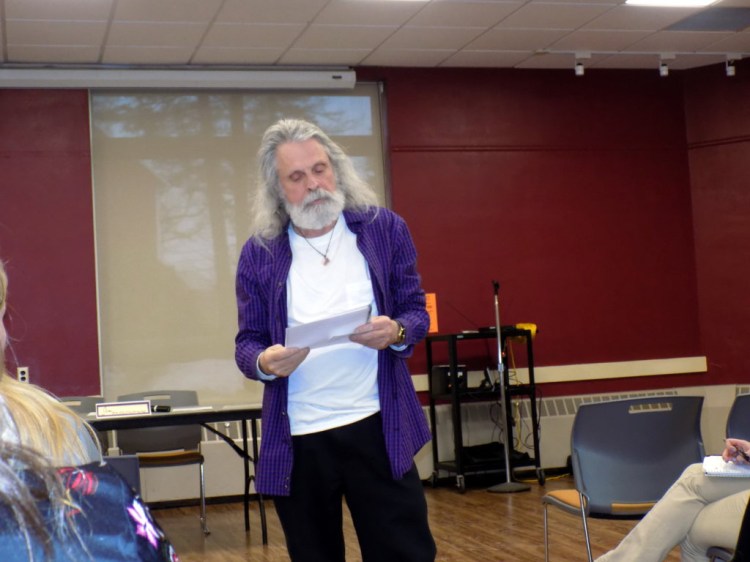FARMINGTON — Stories of recovery, the stigma of substance abuse, barriers to treatment and the effect on families and communities were told Wednesday at the second annual Addiction Forum at the University of Maine at Farmington.
The forum was hosted by students taking courses in advanced addiction, introduction to addiction, and rehabilitation and families.
Jim Mello, instructor of advanced addiction and a licensed alcohol and drug counselor, is in long-term recovery. He said medically assisted treatment is controversial, but it’s the best option available.
“MAT stabilizes the brain so people no longer chase after the drug,” he said. “More emphasis is given to rebuilding relationships, getting jobs and becoming involved in the community during recovery.”
Mello said in 2016 1.15 million people in America received opium replacement therapy.
“In 2015, 15,500, or 1 out of every 150 people in Maine, were in or needed treatment for substance abuse,” he said. “Each person needing treatment impacts five to seven other people.”
Mello said a good continuum of service is lacking. He would like to see cold-turkey rooms in hospitals similar to birthing rooms.
“Recovery is a process of change,” he said. “Communities need to be more sensitive to recovery. Medication isn’t the whole picture.”
Darcy Wilcox, of Maine Pre-Trial Services said, “The addiction takes over. If we provide the structure, we can address behaviors to enhance positive behaviors.”
Maine Pre-Trial Services offers alternative sentencing programs for offenders.
Rileigh Blanchet, of the Franklin County Children’s Task Force, said that agency provides classes on parental resilience and the ability to bounce back from stress or solve problems, hosts events to reduce isolation and connects families to available resources.
“I see more kids impacted by their parents’ usage than kids using themselves,” Riley said. “It’s a challenge to get a student to a counselor without letting the parents know the student is having problems as a result of the parents’ choices.”
Ashley McCarthy, of the Healthy Community Coalition, referred to Mt. Blue High School statistics obtained through the Maine Integrated Youth Health Survey that showed:
• 22 percent said violence in the home made them want to leave home.
• 26 percent feel sad or hopeless.
• 23 percent have experienced three or more adverse experiences.
• 10.3 percent had taken pain medication at least once without a prescription or used it outside of how it was prescribed.
Among the barriers to treatment and recovery that were mentioned were fear, transportation, child care, finances, liability issues, lack of treatment facilities, gender or a family situation wherein MaineCare doesn’t cover men without children and some women.
Ways to break the stigma of addiction, treatment and recovery included changing the culture, talking about them, talking with the younger generation, sharing warning signs, changing the language by using disorder instead of addiction, being kind and selfless, increasing knowledge and being objective.
Send questions/comments to the editors.



Comments are no longer available on this story